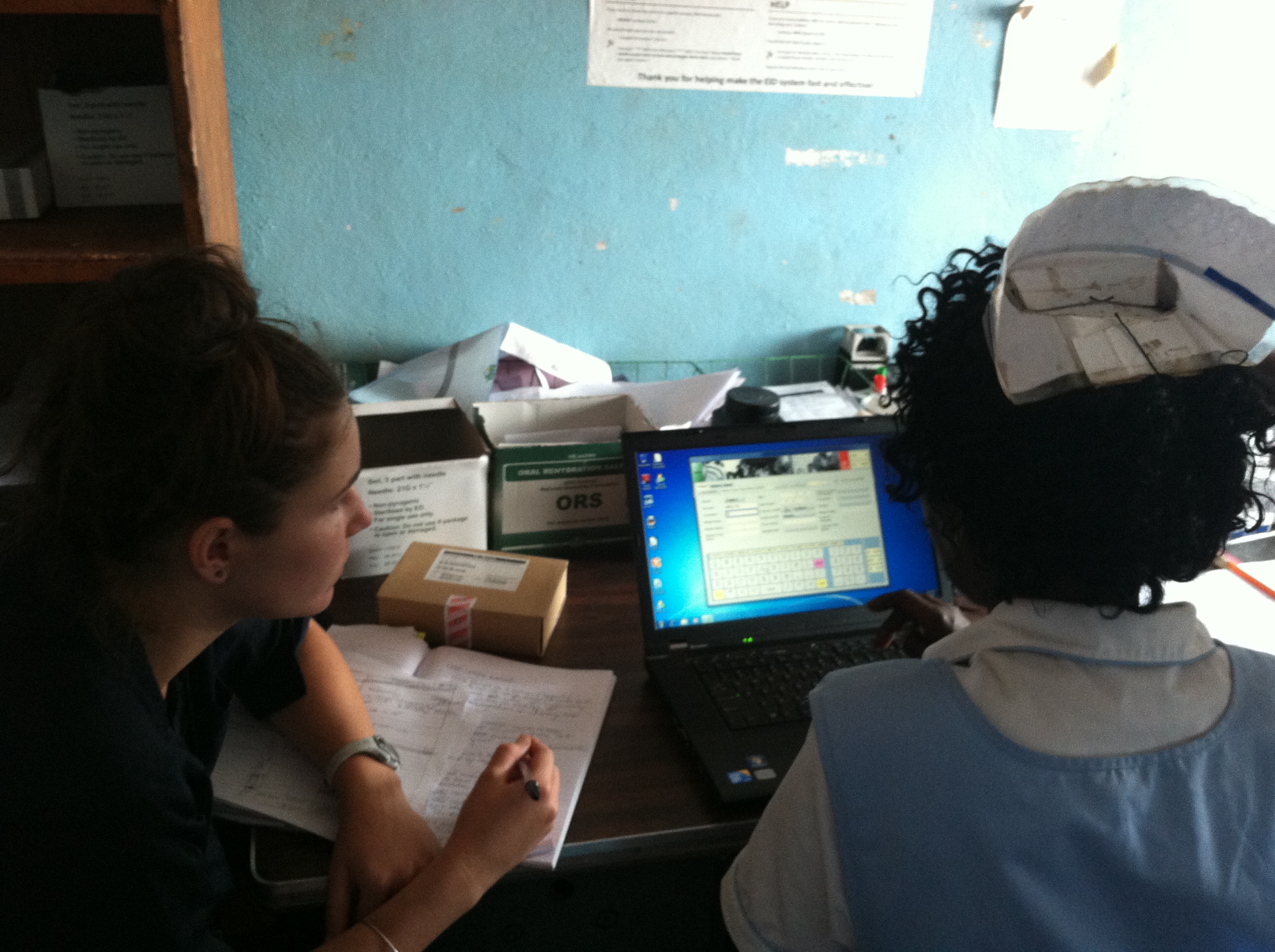Reduce maternal mortality. Improve access to health care for the poor and underserved. Eliminate pediatric AIDS. The problems we work on can be daunting – they are big, messy, and complex. There is no clear way forward, no tried and true recipe for what works.
Take for example, the elimination of pediatric AIDS, the mission of the Elizabeth Glaser Pediatric AIDS Foundation and the focus of my work for the next year (at least). The problem of pediatric HIV/AIDS is indeed big, messy, and complex with 120,000 children under the age of 15 living with HIV (source: UNAIDS 2009) and approximately 80,000 infants exposed to HIV annually in Zambia (source: Zambia ANC Sentinel Surveillance Report, 2008), my adopted country for the year.
Recently we were asked at our Quarter 1 retreat to give an elevator pitch on what we were doing this year as a Global Health Corps (GHC) Fellow. A simple question, right? “What are you doing?” A simple question, but surprisingly hard to answer. Especially when your most truthful response reveals you’ve just been coming up with a lot of ideas… lots and lots of ideas.
In our day to day – how many times have we heard good ideas flutter by, the only acknowledgement they receive being a one-off “that’s brilliant” by the boss. After exhausting all versions of “This is what’s going wrong” and “If only so-and-so would recognize X,” it’s quite easy to sit in a room and slingshot ideas one by one straight into the trash bin – not because we throw them away on purpose, but rather we get caught up in the euphoria of idea generation and unknowingly leave the meeting with a pile of orphaned ideas on the table to be swept up by the cleaning staff.
I think what makes this so commonplace in our line of work is that we are truly digging deep. The deeper you dig into these big, messy, complex problems, the more you understand about what needs to be done. Many of us left cushy jobs in our home countries to get closer to the ground – closer to the clinics where the health care worker is touching a computer for the first time to access a patient’s record, closer to the young mother seeking HIV testing and counseling after a 5K walk and a 9 hour wait at the clinic.

This is the paradox of “getting close.” The closer you are to the problem, the more ideas you generate. The more ideas you generate, the more overwhelmed you become by the amount of ideas you are not the pursuing, the amount of tasks you are not completing. As Scott Belsky writes in his book, Making Ideas Happen, “A surplus of ideas is as dangerous as a drought.”
So how do we fight this? How do we fight the tendency within ourselves to constantly generate new ideas at the risk of not taking actions on existing ones? How do we cultivate a bias towards action within our teams, our organizations, the GHC community, and within the field of global health?
For starters, I’ll share with you my action system, inspired and facilitated by Belsky’s “Action Method,” a product of the Behance Network. It’s a combination of a paper notebook and an online system that I do my best to sync up when I have access to the Internet. I write down all action steps that occur throughout the day and assign them to a project, i.e. “Professional Development” or “Evaluating Teen Mentors Program.” I’m religious about tracking each task, and over time, I’ve become more selective of what ideas make the list – because once they make the list, I’ve committed myself. This helps to keep me honest – prompting the question, “Am I really going to do that?”
Tracking my ideas in a visual way, allows me to see my progress – immediate feedback that tells me I’m doing something.
Then there’s the routine. Like any behavior change theory suggests, establishing a new habit or routine is not easy. It helps to have an incentive attached to the new behavior. Hence, my action routine consists of the above steps, and a weekly review of my existing action steps while sitting on my patio, with my little garden, and my cheese. I examine the steps still on the list and enforce the Nike rule – Just Do It or remove it from the list (new habit). There’s no sense in feeling weighed down by the guilt of not doing something you never really planned to do. Then, I eat some cheese (reward).
And that’s how I came to write this blog post. It’s been an action step in my “Global Health Corps” project for several weeks – and I got tired of seeing it on my screen, taking up precious real estate for future ideas and action steps that might one day make a dent in one of those big, messy, complex problems.
Based on my short time in Zambia, I don’t think that global health suffers from a lack of ideas, or a lack of dedicated, passionate people. I do think that the complex, cross-disciplinary, black-box-like nature of the problems we are trying to solve can sometimes lead us to spend a disproportionate amount of time thinking, weighing, ranting, and analyzing, and we forget that the solutions to these problems start with a single action step.
With that, I invite you to find and share what action method works for you – and together we can cultivate a bias towards action.
